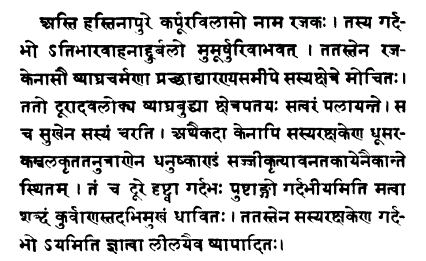| Most Popular Sanskrit Language Product Types | |
|
|
|
|
| All Sanskrit language product types |
|
|
|
|
|
Language Information
Sanskrit is the ancient literary and classical language of India, the sacred language of the Hindu religion. Brought to India from the northwest about the middle of the second millennium B.C., Sanskrit (which means "refined," "perfected," or "elaborated") eventually gave rise to the Prakrit ("natural" or "common") languages. These in turn gave rise to the modern Indian languages such as Hindi, Bengali, Marathi, and Gujarati, as well as Nepli, spoken in Nepal, and Sinhalese, spoken in Ceylon (now Sri Lanka).
The oldest form of Sanskrit is known as Vedic Sanskrit, after the Vedas, the ancient hymns of the sacred Hindu scriptures. The later stage is known as classical Sanskrit, whose writings deal chiefly with secular subjects. For over three millennia Sanskrit continued to flourish as the language of learning in India, and the output of literary works continued without diminution until well into the 19th century. Although the competition of English as the language of government and science, coupled with the rising influence of the modern Indian languages, has undercut much of Sanskrit's former preeminence, it is still widely studied and, in fact, is even spoken by a number of Indian scholars.
Sanskrit is an Indo-European language, whose entry into the Indian subcontinent marked a new frontier for this widely dispersed family. Its Indo-European origin was, of course, unknown to the ancient and even to the medieval world. It was only in the 18th century that the striking sim~arity of Sanskrit to Latin and Greek was first noted in detail. Thus were set in motion the investigations that led to the discovery of the interrelationship of all the Indo-European languages, which in turn laid the foundation of the science of modern comparative and historical linguistics.
Sanskrit is written in an alphabet known as Devanagari. To trace its origin is to trace the development of writing in India. The source of most of the Indian alphabets is an ancient script known as Hrahmi which, in the opinion of most scholars, is of Semitic origin, probably Aramaic. One of its many offshoots was the Gupta script, used throughout the powerful Gupta empire in the 4th-6th centuries A.D. The Devanagari characters developed from a variety of Gupta, the earliest inscriptions appearing in the 7th century. The alphabet, which is written from left to right, consists of forty-eight signs, of which thirty-four are consonants and fourteen are vowels or diphthongs. It is considered one of the most perfect systems of writing ever devised.
Sanskrit is spoken/used in the following countries:
India, Sri Lanka (Ceylon).
Language Family
 Family: Indo-European
Family: Indo-European
 Subgroup: Indo-Iranian
Subgroup: Indo-Iranian
 Branch: Indic
Branch: Indic
Copyright © Kenneth Katzner, The Languages of the World, Published by Routledge.
Writing Sample

Translation
In Hastinapura there was a washerman named Vilasa. His donkey was near death, having become weak from carrying excessive burdens. So the washerman covered him with a tiger-skin and turned him loose in a cornfield near a forest. The owners of the field, seeing him from a distance, fled away in haste, under the notion that he was a tiger. Then a certain corn guard, having covered his body with a gray blanket, and having made ready his bow and arrows, crouched down in a secluded spot. Then the donkey, having grown plump from eating, spied him at a distance, and supposing him to be a she-donkey, trotted up to him braying. The corn guard, discovering him to be only a donkey, killed him with ease.
The Donkey in the Tiger-Skin, from the Hitopadesa
|


